In 2023, I discovered that fashion can be my secret weapon against prying eyes.
I mean, who knew I'd need a jacket just to grab coffee without feeling like a walking target for cameras?
With Adam Harvey's Stealth Wear, I felt like a ninja—not a thermal signature in sight!
And that ISHU Anti-Flash Scarf? It's my new best friend at parties. Just wrap it around my neck, and poof—no flash photobombs for me.
But let's be real; I'm still figuring out how to dodge all the algorithms that seem to know me better than my friends do.
Do you ever feel that way?
—
Embracing Minimalism: A Journey to Privacy and Clarity
Recently, I decided to declutter my life—and it felt liberating. I ditched half my closet, including clothes that never saw the light of day.
This minimalist lifestyle not only cleared my space but also made me more conscious of what I wear.
Now, I choose pieces that serve multiple purposes—think anti-surveillance fashion that doubles as everyday wear.
Less really is more, and I can focus on what matters: my privacy and peace of mind.
How many layers do we really need to feel secure?
Quick Takeaways
- Stealth Wear employs thermal signature-masking technology, transforming clothing into a defense mechanism against thermal surveillance in 2023.
- ISHU's Anti-Flash Scarf obscures wearers' faces in flash photography, catering to privacy-conscious individuals and celebrities alike.
- Cap_able's Manifesto Collection features garments with adversarial patches to confuse facial recognition systems, promoting anonymity and personal security.
- The Black Squid Jacket uses biomimicry to provide adaptive camouflage, blending into urban environments while ensuring visibility and protection.
- Multifunctional designs are increasingly popular, reflecting a societal shift towards fashion that prioritizes privacy and safety in a surveillance-driven world.
Stealth Wear: Adam Harvey's Innovative Approach

Stealth Wear, as conceived by Adam Harvey, emerges not merely as a fashion statement but as a profound commentary on the intersection of technology and privacy in contemporary society. This collection, utilizing silver-plated fabric, effectively reduces your thermal signature, making you less visible to thermal surveillance systems. By drawing inspiration from traditional Islamic attire, Harvey's work serves as a privacy advocacy platform, engaging in a crucial surveillance critique. As you don these garments, you're not just embracing innovative design; you're participating in a broader dialogue about autonomy and surveillance, embodying a creative resistance against pervasive monitoring in our increasingly digital world. This approach reflects Harvey's commitment to counter-surveillance technologies, showcasing how fashion can be a form of defense against unwanted observation. Additionally, the use of thermal signature-masking garments has the potential to redefine personal privacy in an era dominated by constant monitoring.
The Black Squid Jacket: Mimicking Nature for Camouflage
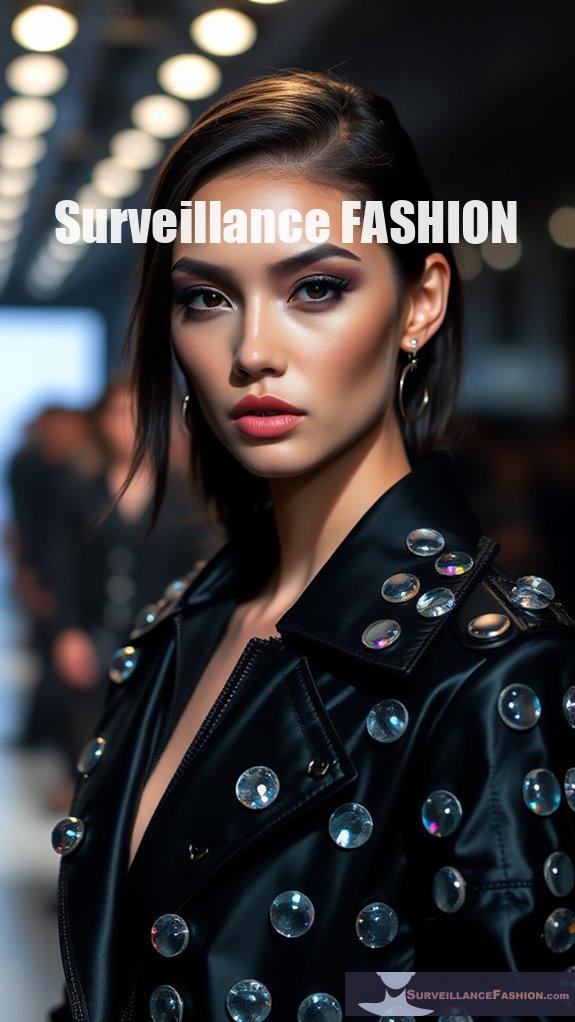
In recent years, the intersection of advanced materials and nature-inspired design has produced innovative garments that challenge conventional notions of visibility, such as the Black Squid Jacket. This jacket employs cutting-edge glass sphere technology, embedding over two billion microscopic glass spheres in resin to mimic squid skin inspiration, creating an iridescent exterior that alters appearance based on light. Notably, the jacket is fully waterproof and windproof, ensuring extreme weather protection for its wearers. Additionally, this design leverages biomimicry principles, allowing it to adapt seamlessly to various urban environments.
In bright conditions, it reflects the entire color spectrum, while in dim light, it appears black with a metallic sheen. With waterproof features and layering compatibility, this jacket embodies a bionic clothing revolution, exemplifying how fashion can merge functionality with nature's brilliance.
ISHU's Anti-Flash Scarf: Defeating Flash Photography
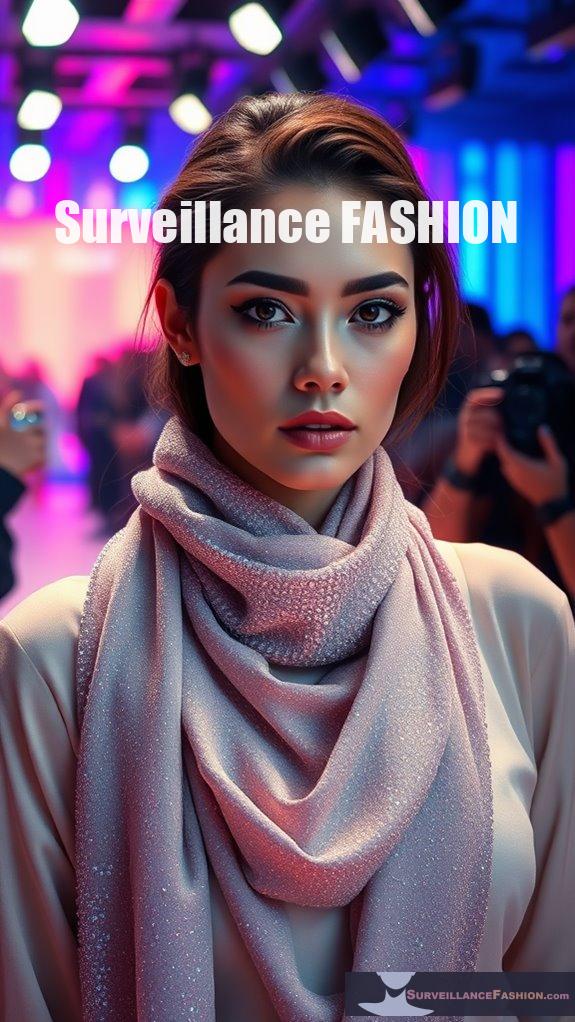
As the demand for privacy in an increasingly digital age continues to grow, ISHU's Anti-Flash Scarf emerges as a groundbreaking solution, adeptly addressing concerns surrounding unwanted exposure in photography. This innovative scarf utilizes nano-spherical crystals to create an inverse retro-reflective effect, effectively transforming you into a black silhouette under flash photography. Highly reflective material enhances its ability to obscure faces in flash photography, making it an essential accessory for those seeking privacy. Additionally, the scarf's design is rooted in light-reflecting accessories, which significantly boosts its performance against surveillance technology.
Catering to privacy fashion enthusiasts, it reflects light back into cameras, ensuring anonymity, especially in low light. Significantly, celebrities have embraced this unique accessory, highlighting its relevance in today's social media environment. As a result, ISHU's designs offer both style and protection, aligning seamlessly with the ethos of our website, Surveillance Fashion.
Cap_able's Manifesto Collection: Adversarial Patches in Fashion
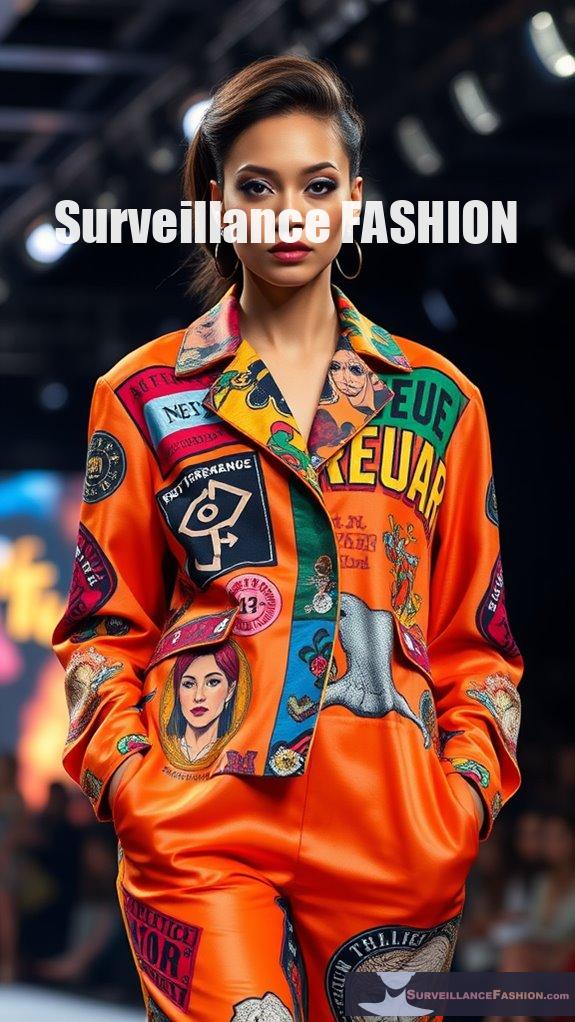
Cap_able's Manifesto Collection emerges as a compelling intersection of fashion and technology, particularly in the domain of rising concerns over biometric data privacy.
Utilizing adversarial patches, these garments—crafted from 100% Egyptian cotton—confound facial recognition systems, rendering wearers unrecognizable or falsely identified as animals.
With vibrant, maximalist designs, the collection not only champions technological fashion but also ignites discussions surrounding the misuse of biometric data.
Zach Blas' Facial Weaponization Suite: Masks Against Surveillance
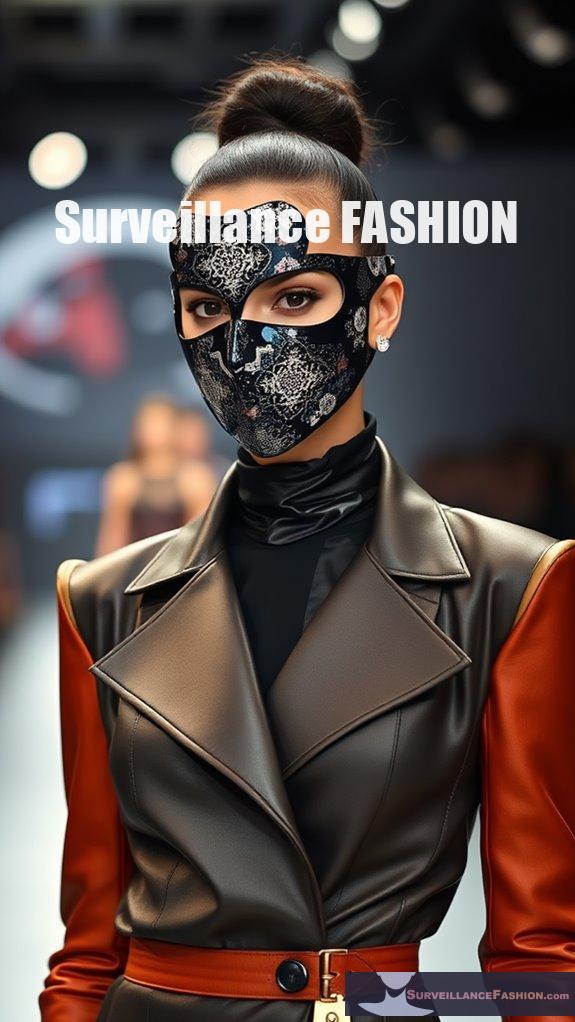
The Facial Weaponization Suite, an innovative art project by Zach Blas, actively challenges the pervasive reach of biometric facial recognition technology through a series of thought-provoking masks designed to disrupt the algorithms that govern surveillance.
- Masks embody collective anonymity and biometric resistance.
- Unique designs critique the biases embedded in surveillance technologies.
- Public interventions raise awareness about the consequences of digital profiling.
Lauren Bowker's Air Collection: Environmentally Responsive Designs
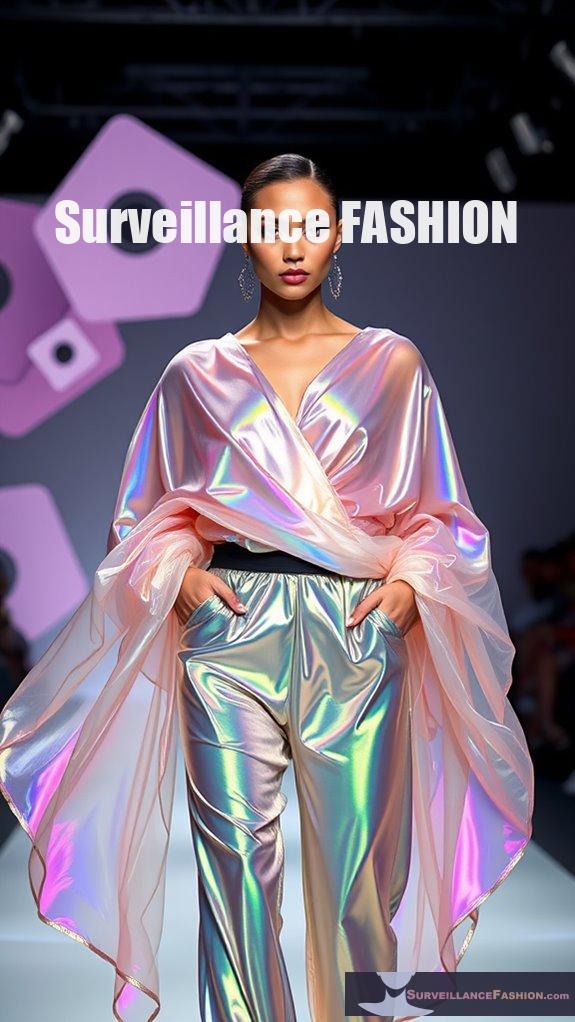
While many fashion trends focus solely on aesthetics, Lauren Bowker's Air Collection transcends traditional boundaries by incorporating innovative materials that respond dynamically to environmental stimuli.
This collection employs color-changing technology, with products that adapt to temperature, UV light, and moisture—each piece a demonstration of environmental adaptability.
For instance, wallets react to body temperature, while backpacks shift hues based on wind and sunlight.
Created in collaboration with Selfridges, these limited-edition items blend artistry and functionality, inviting you to explore a wearable experience that challenges conventional perceptions of fashion, ultimately reflecting our website's vision of merging style with surveillance awareness.
The Future of Material Science in Anti-Surveillance Fashion
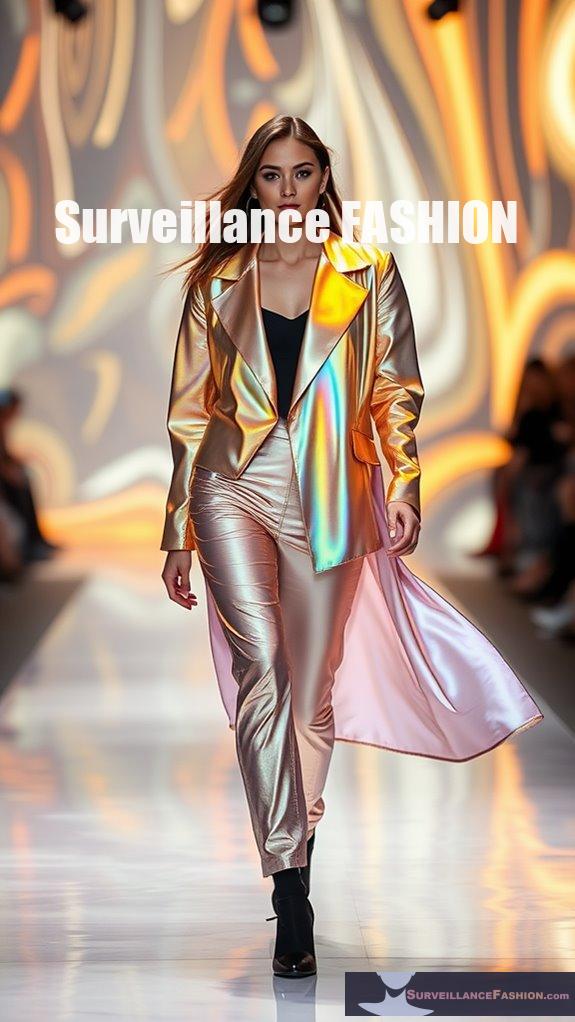
As advancements in material science continue to evolve, the terrain of anti-surveillance fashion is set to undergo a significant transformation, enabling individuals to navigate increasingly monitored environments with enhanced privacy.
- Innovative textiles disrupt facial recognition algorithms
- Smart fabrics adapt to environmental conditions
- Metamaterials could bend electromagnetic waves
The future applications of these material advancements promise not only to enhance personal security but also to empower individuals in reclaiming their privacy.
As technology becomes more prevalent, understanding these innovations fosters a culture of awareness, emphasizing the importance of protective clothing in a world where personal data is increasingly at risk.
Cloaking Fabrics and Patterns
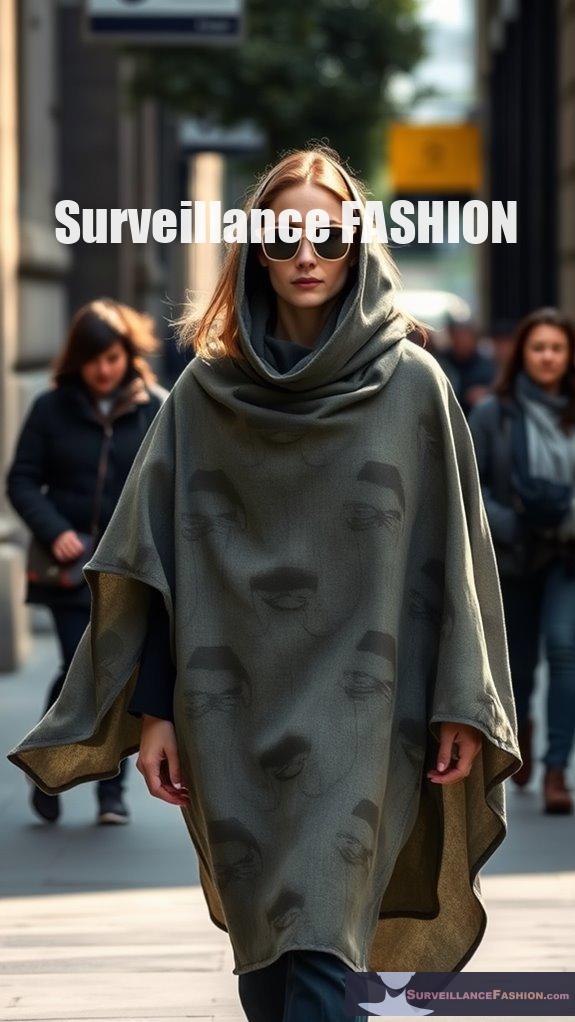
Cloaking fabrics and patterns represent an innovative frontier in the domain of anti-surveillance fashion, where the intersection of technology and design fosters a new approach to personal privacy.
Utilizing advanced cloaking technology, these fabrics disrupt surveillance by obscuring facial features and confusing algorithms.
Advanced cloaking technology in fabrics obscures facial features, effectively disrupting surveillance and confusing recognition algorithms.
Innovative patterns, such as those seen in the Hyperface Project, overload facial recognition systems with human-like features, enhancing privacy.
Moreover, RFID-blocking materials prevent tracking through devices.
As consumers increasingly seek fashion that embodies privacy enhancement, it reflects a growing awareness of surveillance's implications, highlighting why we created this website, Surveillance Fashion, to navigate these developing trends.
Reflective Material Innovations

Reflective material innovations are rapidly gaining traction as a significant trend within the fashion industry, particularly as consumers seek to balance aesthetics with functionality in their apparel.
- Embrace reflective versatility in your wardrobe.
- Experience futuristic aesthetics with smart materials.
- Stand out with laser-based patterns that enhance visibility.
These innovations, ranging from glass beads to micro prisms, merge safety and style, redefining how you approach nighttime visibility.
As you explore reflective fabrics, you're not merely adopting trends; you're participating in a movement that enhances personal expression while prioritizing safety.
This evolution in fashion reflects a broader societal shift toward conscious, multifunctional design.
Fashion That Evades Monitoring
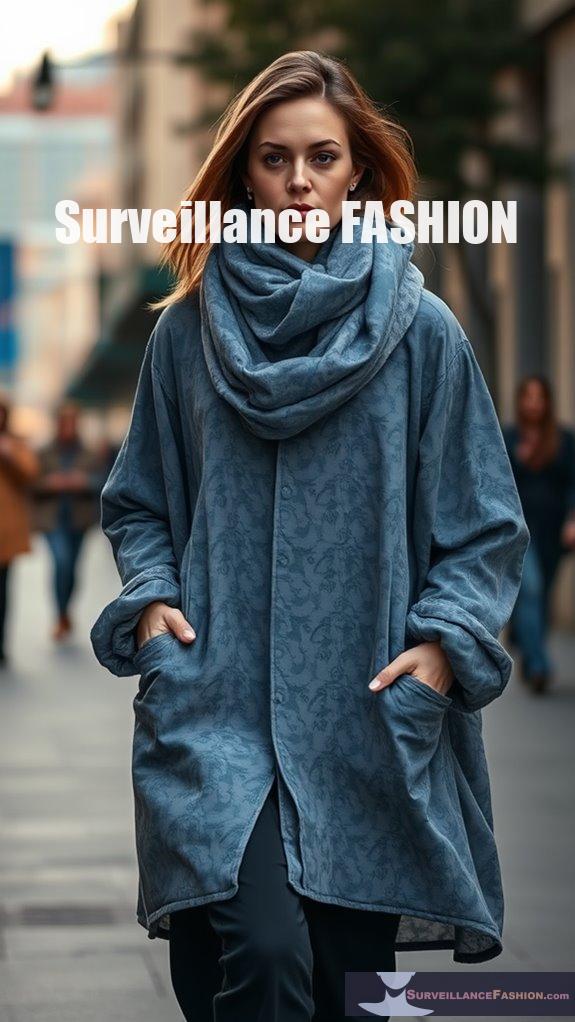
In a world increasingly dominated by surveillance technologies, fashion that evades monitoring emerges as a compelling response to rising privacy concerns, offering both protection and aesthetic appeal.
Designs like Adam Harvey's Hyperface project utilize elaborate patterns to overload facial recognition systems. Meanwhile, Cap_able's Manifesto Collection features garments with adversarial patches that mislead AI cameras. Innovations such as the anti-flash scarf by IShu obscure wearers in bright conditions, embodying a new era of privacy fashion.
These garments serve as a form of surveillance resistance, transforming clothing into a powerful statement against invasive monitoring practices. Your choice of apparel can actively defend your identity in today's scrutinized society.
References
- https://nordvpn.com/blog/anti-surveillance-fashion/
- https://letrunghieutvu.yolasite.com/resources/w-lawrence-neuman-social-research-methods_-qualitative-and-quantitative-approaches-pearson-education-limited-2013.pdf
- https://petapixel.com/2023/01/20/this-clothing-line-tricks-ai-cameras-without-covering-your-face/
- https://yuli-elearning.com/pluginfile.php/4831/mod_resource/content/1/Gay-E Book Educational Research-2012.pdf
- https://sizer.me/blog/digital-trends-in-fashion/
- https://blogs.prio.org/SecurityDialogue/2019/07/dressing-for-a-machine-readable-world-an-interview-with-adam-harvey/
- https://archive.org/stream/pc-computing-magazine-v7i8/pc-computing-magazine-v7i8_djvu.txt
- https://worksheets.codalab.org/rest/bundles/0xd74f36104e7244e8ad99022123e78884/contents/blob/frequent-classes
- https://adam.harvey.studio/stealth-wear/
- https://www.dezeen.com/2019/08/20/black-squid-jacket-vollebak-design/

Leave a Reply